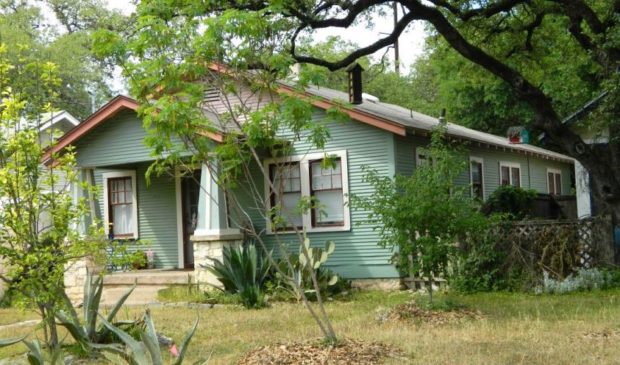Landmark commission drills down on CodeNEXT
Friday, April 6, 2018 by
Elizabeth Pagano As the final draft of CodeNEXT inches ever closer to City Council, city commissions are compiling their recommendations in preparation. This week, the Historic Landmark Commission took a look at the third draft of the Land Development Code rewrite at a special called meeting on the subject.
In addition to the meeting, commissioners got answers to some of the recommendations that they had forwarded in October. Those answers, and a presentation by Planning and Zoning Director Greg Guernsey, will be reviewed by a committee of the commission, with an aim of the commission articulating its recommendations at its April 23 meeting.
Paramount in Monday’s discussion was the issue of demolitions, and how to slow them. In the response to the commission’s recommendations, staff cited a non-CodeNEXT resolution that is looking at the city’s demolition process and fees. A recommendation to incentivize retention of existing older buildings through tools like tax increment financing districts, transfer of development rights or facade easements was not included because, according to the response from staff, “it is beyond the scope of CodeNEXT.”
On Monday, Guernsey explained. “Demolitions are left as an unanswered question at this time,” he said.
“Property values are still going up in Austin, and so I think there is a continued pressure on everyone on what could happen in their neighborhood,” said Guernsey. “We are trying to find a way where they can have alternatives rather than just tearing down their house.”
The meeting was an opportunity to question some of those alternatives and how effective they might be in terms of historic preservation. Draft three has embraced many of the commission’s recommendations to loosen restrictions on building accessory dwelling units, in an effort to encourage retention of original structures.
However, Commissioner Kevin Koch questioned a so-called “preservation incentive” that does not count accessory dwelling units toward the total floor area ratio calculation for homes 10 years or older. He pointed out that the change wouldn’t necessarily encourage preservation of historic homes but, rather, would apply to “the vast swath of the homes” in the city.
“It would,” agreed Guernsey. He explained that the preservation incentivized in this context was designed to retain affordable homes, and homes “that the neighborhoods would like to see … maintained or preserved even though they might not be historic.”
Myers questioned the idea of “preservation” in the incentive, asking what the definition in this context was. “If we’re just preserving two walls, that’s not preservation,” she said.
“Well, they can certainly remodel,” said Guernsey. He agreed that in this context “preserve” was not defined, and he suggested that definition could be provided by the commission as part of its comments.
Commissioners also hoped that stronger mechanisms for enforcing their process would be included in the new code.
“Can we have more enforcement and penalties within the preservation office to handle when people don’t do what they tell us they are going to do?” asked Koch. He, and other commissioners, cited cases where they had approved plans for remodeling that were cast aside after the fact, leaving them somewhat helpless.
Historic Preservation Officer Steve Sadowsky said that would be largely contingent on more staff to monitor situations, which he said should be handled through the budget. Guernsey said that it might be something best handled by the Law Department.
The answers did not appear to satisfy commissioners.
“Why have laws?” said Commissioner Terri Myers. She explained they were looking for a way to get people to take approvals of new construction in historic districts, known as certificates of appropriateness, seriously and get some support from the city.
“We spend hours every month going over these things, and it’s just a waste of time and a waste of our energy if people don’t do what they say they are going to do,” she said.
Koch also raised the question of “pendency” as it applies to local historic districts. At the moment, local historic districts that are under review and in the midst of the city’s process do not keep things like demolitions from moving forward. He was assured that this issue was addressed in the draft, and pendency of local historic districts was established.
Photo courtesy of the city of Austin.
The Austin Monitor’s work is made possible by donations from the community. Though our reporting covers donors from time to time, we are careful to keep business and editorial efforts separate while maintaining transparency. A complete list of donors is available here, and our code of ethics is explained here.
You're a community leader
And we’re honored you look to us for serious, in-depth news. You know a strong community needs local and dedicated watchdog reporting. We’re here for you and that won’t change. Now will you take the powerful next step and support our nonprofit news organization?



